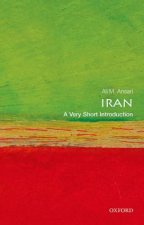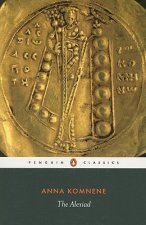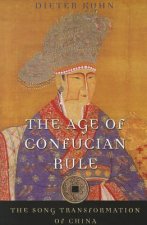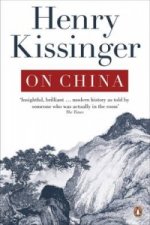
Kod: 04613170
Great Hill Stations Of Asia
Autor Barbara Crossette
For the European and later the American colonial soldier, the civil administrator and his clerk, the merchant, the missionary, and the families who followed them east of Suez, daily life was less a matter of advancing the glory of ... więcej
- Język:
 Angielski
Angielski - Oprawa: Miękka
- Liczba stron: 268
Wydawca: Basic Books, 1999
- Więcej informacji o książce

89.24 zł
Zwykle: 90.13 zł
Oszczędzasz 0.88 zł

Dostępna u dostawcy
Wysyłamy za 14 - 18 dni
Zobacz książki o podobnej tematyce
-

Astro-characters
62.65 zł -14 % -

Israel's Years of Bogus Grandeur
119.97 zł -10 % -

Wake
77.46 zł -

Communication History in Canada
381.79 zł -

Technology in the Law Office
917.61 zł -

Herbert Hoover, Unemployment, and the Public Sphere
325.17 zł -

Daughters of Zion
95.79 zł -4 %
Bon podarunkowy: Radość gwarantowana
- Podaruj bon o dowolnej wartości, a my się zajmiemy resztą.
- Bon podarunkowy dotyczy całej naszej oferty.
- Możesz wydrukować elektroniczny bon z e-maila a następnie przekazać go obdarowanemu.
- Ważność bonu wynosi 12 miesięcy od daty wystawienia.
Więcej informacji o Great Hill Stations Of Asia
Za ten zakup dostaniesz 52 punkty
 Opis
Opis
For the European and later the American colonial soldier, the civil administrator and his clerk, the merchant, the missionary, and the families who followed them east of Suez, daily life was less a matter of advancing the glory of God or empire than a battle for survival against sunstroke, dysentery, cholera, malaria, and a host of other unnamed deadly fevers as well as little-examined, vague indispositions that in hindsight would probably be diagnosed as clinical symptoms of depression. Later, medical scholars coined a phrase for it: "tropical fatigue." Pity John Ouchterlony. By the time they brought him to the healing hills, it was too late. On April 29, 1863, Lieutenant Colonel Ouchterlony of the Royal Madras Engineers died of "jungle fever brought on by exposure while in the execution of his duty," says a memorial plaque--one of many--at St. Stephens Church in Ootacumund, a British colonial town in the Nilgiri Hills of southern India. Others were luckier. They got to Ooty in time and survived the perilous East, at least for another season, by rising above its pestilential lower reaches. On litters, in chairs, on ponies, by foot if they were able, Europeans in Asia nearly two centuries ago began climbing into the hills in search health, relaxation, and sometimes their sanity.They called the refuges they created--little European towns carved from rocky mountainsides or nestled in the meadows of high plateaus--"hill stations." Colonialism came and went, but the hill stations remain. They are no longer European, but most have not lost their unique appeal. After all, the plains still fry in the sun and the cities of Asia have only grown larger, noisier, and more polluted. New generations of Asians are rediscovering hill stations and turning them into tourist resorts with luxury hotels and golf courses. Hill stations still cling to their history, and the story they tell reveals a lot about how colonial life was lived. They also have a future, if environmental damage and overpopulation do not destroy the forested hills and mountains that gave them their spectacular settings and pleasant climates.Hill stations began to appear, albeit at different times in different places, when the era of initial exploration and conquest was waning, wives and families arrived in substantial numbers, and life had become a bit more routine. By then, colonial societies could take stock of their longer-term needs and, regrettably, look for ways to build walls around themselves to shut out native populations. Through the age of European mercantile empire building and colonialism that began with the turn of the sixteenth century, hill stations were largely a nineteenth-century phenomenon. Most were established between 1820 and 1885, though the Dutch were early with Bogor in Indonesia and the French came later with Dalat in Vietnam and the Americans with Baguio in the Philippines. The British themselves built a second generation of hill stations after World War I in southeast Asia.In early 1997, Barbara Crossette set off on a journey of several months to see Asia anew through its great hill stations, moving from mountain to mountain from Pakistan, across India, to Sri Lanka, Burma, Malaysia, Vietnam, and the Philippines. A year earlier, Crossette had made a trip to the highlands of Indonesian Sumatra, the land of the Minangkabau and Batak people, where the idea of this kind of journey came together.
 Szczegóły książki
Szczegóły książki
Kategoria Książki po angielsku Humanities History Regional & national history
89.24 zł
- Pełny tytuł: Great Hill Stations Of Asia
- Autor: Barbara Crossette
- Język:
 Angielski
Angielski - Oprawa: Miękka
- Liczba stron: 268
- EAN: 9780465014880
- ISBN: 0465014887
- ID: 04613170
- Wydawca: Basic Books
- Waga: 309 g
- Wymiary: 202 × 129 × 16 mm
- Data wydania: 31. May 1999
Ulubione w innej kategorii
-

Hundred Years' War on Palestine
57.71 zł -15 % -

Ethnic Cleansing of Palestine
61.24 zł -15 % -

History of Japan
81.39 zł -4 % -

Ten Myths About Israel
55.40 zł -10 % -

Strange Death of Europe
70.20 zł -14 % -

Decline and Fall of the Roman Empire
25.07 zł -26 % -

Secret History
51.97 zł -23 % -

God's Playground A History of Poland
291.83 zł -

Mayflower
81.69 zł -5 % -

How to be a Victorian
51.87 zł -23 % -

Plantagenets
61.14 zł -23 % -

General's Son
85.62 zł -5 % -

Iran: A Very Short Introduction
57.71 zł -5 % -

Temples of Karnak
651.97 zł -

Cuneiform
47.34 zł -23 % -

Twenty Years A-Growing
42.70 zł -23 % -

China in Africa
155.53 zł -

Bohemian Paris
81.49 zł -5 % -

History of Witchcraft in England from 1558 to 1718
78.97 zł -

Islandman
53.38 zł -9 % -

Lancaster And York
89.04 zł -1 % -

Alexiad
89.75 zł -4 % -

Modern France: A Very Short Introduction
57.71 zł -5 % -

Inside Hitler's Greece
100.12 zł -9 % -

Diana: Her True Story - In Her Own Words
52.37 zł -15 % -

The Fourth Turning
77.26 zł -14 % -

The Oxford History of Ancient Egypt
65.77 zł -23 % -

Churchill: The Power of Words
70.20 zł -14 % -

Palestine
91.36 zł -14 % -

Korean History in Maps
133.57 zł -5 % -

Great Gatsby (Wisehouse Classics Edition)
32.73 zł -70 % -

Viking Way
196.43 zł -6 % -

The Thirteenth Tribe
59.42 zł -

My Promised Land
61.24 zł -15 % -

Vanished Kingdoms
87.93 zł -14 % -

Age Of Revolution
70.41 zł -23 % -

Life and Death of Anne Boleyn
100.43 zł -2 % -

Coming of the Third Reich
79.47 zł -23 % -

Children of Ash and Elm
78.97 zł -14 % -

Europe Between the Oceans
140.42 zł -10 % -

Socialism Betrayed
97.30 zł -5 % -

303 Squadron
79.47 zł -23 % -

Ancient Celts, Second Edition
133.57 zł -5 % -

Dancing in the Glory of Monsters
81.49 zł -5 % -

Battle of Britain: Luftwaffe Blitz (Images of War)
112.41 zł -6 % -

Age of Confucian Rule
139.41 zł -

Beyond Band of Brothers
70.41 zł -23 % -

Benjamin Franklin
70.41 zł -23 % -

On China
78.97 zł -14 %
zadowolonych klientów
Od roku 2008 obsłużyliśmy wielu miłośników książek, ale dla nas każdy był tym wyjątkowym.
Copyright! ©2008-24 libristo.pl Wszelkie prawa zastrzeżonePrywatnieCookies


 21 milionów książek
21 milionów książek Dostawa 10.99 zł
Dostawa 10.99 zł (32) 444 93 66 (8-15.30h)
(32) 444 93 66 (8-15.30h)